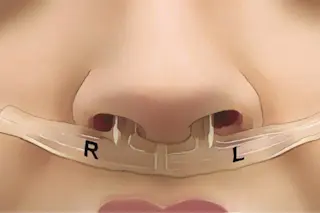In a flash, the blast incinerates air, sprays metal,burns flesh. Milliseconds after an improvised explosive device (IED) detonates, a blink after a mortar shell blows, an overpressurization wave engulfs the human body, and just as quickly, an underpressure wave follows and vanishes. Eardrums burst, bubbles appear in the bloodstream, the heart slows. A soldier—or a civilian—can survive the blast without a single penetrating wound and still receive the worst diagnosis: traumatic brain injury, or TBI, the signature injury of the Iraq War.
But in the same instant that the blast unleashes chaos, it also activates the most organized and sophisticated trauma care in history. Within a matter of hours, a soldier can be medevaced to a state-of-the-art field hospital, placed on a flying intensive care unit, and receive continuous critical care a sea away. (During Vietnam, it took an average of 15 days to receive that level of treatment. Today ...














